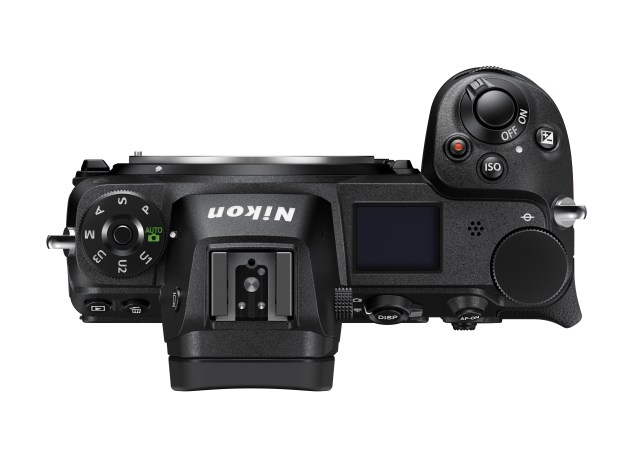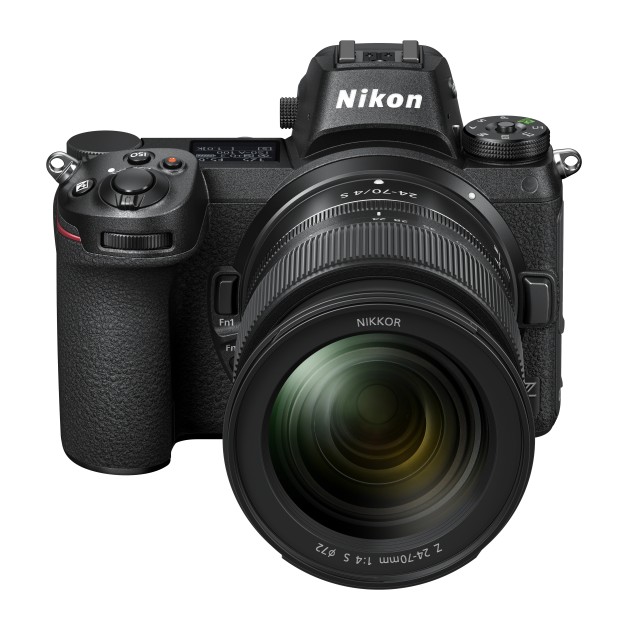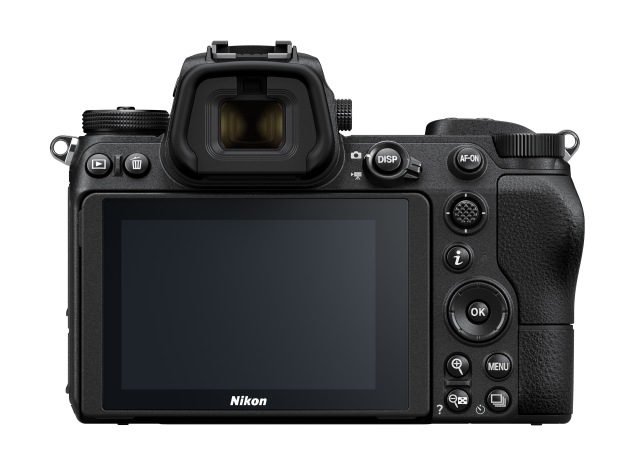Nikon goes full-frame mirrorless with the Z7 & Z6
Better late to the party, than not come at all. Nikon has finally taken the leap releasing two full-frame mirrorless cameras. After endless speculation, teaser videos, and leaks aplenty, the camera manufacturer finally lifted the lid on their biggest announcement of the year: the release of the Nikon Z6 and Z7.

Nikon’s new Z-mount system comprises the two full-frame mirrorless cameras and a range of NIKKOR Z lenses. Initially, three will be on offer and include a 35mm f/1.8, 50mm f/1.8, and 24-70mm f/4. In the near future, a 58mm f/0.95 lens, the fastest in Nikon’s history will be added to the range. Great news for Nikon users is that a new mount adapter will enable compatibility with NIKKOR F mount lenses.
While the bodies of the Z7 and Z6 appear almost identical from the outside, they differ in a number of ways. Respectively, the cameras offer 45.7 and 24.5 megapixels, ISO 64–25,600 and ISO 100–51,200 (both can be expanded one stop under and two stops over this range), and 9fps and 12fps. Both are equipped with a new backside illumination full-frame, Nikon FX-format CMOS sensor with built-in focal-plane phase-detection AF pixels, and the latest image-processing engine, EXPEED 6.

Both the Z7 and Z6 rely on a hybrid AF system with focus points covering approximately 90% of the imaging area with the former offering 493 focus points and the latter has 273 focus points. This hybrid AF system uses an algorithm optimised for the FX-format sensor, to automatically switch between focal-plane phase-detection AF and contrast-detect AF when focusing.
Nikon claims that the electronic viewfinder adopted for the cameras is comparable to optical viewfinders. The EVF is a 3.69-megapixel-dot OLED panel and has frame coverage and magnification of approximately 100% for the Z7 and 0.8× for the Z6. A fluorine coat that effectively repels dirt has been applied to the eyepiece protection window.

Both the Z7 and Z6 support recording of not only full-frame 4K UHD (3840 × 2160)/30p movies using the FX-based movie format, but also full-HD/120p movies. Additionally, Active D-Lighting, electronic vibration reduction, and focus peaking can be used with 4K UHD and Full-HD movie recording.

In another first for Nikon, both the Z7 and the Z6 are equipped with in-camera vibration reduction (VR), providing compensation for movement along five axes, allowing you to shoot with vibration reduction equivalent to a shutter speed increase of approximately 5 stops.
An interval timer option on the Z7 makes 8K time-lapse movie creation possible.
Both cameras only feature one XQD memory card slot.

Other features
The features below are common across both the Z7 and Z6:
- Strength and durability, plus dust- and drip-resistance equivalent to the Nikon D850.
- 3.2-inch, 2.1 megapixel-dot touch-sensitive LCD monitor with a tilting mechanism.
- Silent photography which eliminates shake and noise caused by shutter release.
- Peaking stack image function which enables confirmation of focus depth after shooting using focus shift, which is convenient for focus stacking.
- Built-in Wi-Fi.
Rivals of the Z7 and Z6
The most obvious rivals of the new Nikon Z6 and Z7 are Sony's full frame A7 III and A7R III. You can see a table of the comparable specs below.
Specs: Nikon Z6 vs Sony a7 III
|
|
Nikon Z6 |
Sony a7 III |
|
Camera Format |
Mirrorless |
Mirrorless |
|
Effective megapixels |
24.5MP |
24.2MP |
|
Image Resolution |
6048 x 4024 |
6000 x 4000 |
|
Sensor Size |
Full-frame |
Full-frame |
|
Sensor Dimensions |
35.9 x 23.9mm |
35.6mm x 23.8mm |
|
Sensor type |
CMOS |
CMOS |
|
Aspect Ratio |
3:2 |
3:2 |
|
Lens Mount |
Z-mount |
E-Mount |
|
Anti Aliasing Filter |
Not specified |
Yes |
|
Rear monitor type |
Articulating touchscreen |
Articulating touchscreen |
|
Rear monitor size |
3.2in |
3in |
|
Rear monitor resolution |
2,100,000 dots |
921,600 dots |
|
Top deck display |
Yes |
No |
|
EVF size |
0.5in |
0.5in |
|
EVF Resolution (dots) |
3,690,000 dots |
2,359,296 dots |
|
Viewfinder Magnification |
0.8x |
0.78x |
|
ISO (native) |
100-51,200 |
100-51,200 |
|
ISO (extended) |
50-204,800 |
50-204,800 |
|
Shutter Speed Max |
1/8000s |
1/8000s |
|
Shutter Speed Min |
30s |
30s |
|
Image Format |
RAW (14bit), JPEG |
RAW (14bit), JPEG |
|
Stabilisation |
5-axis |
5-axis |
|
Exp Compensation |
-5 to +5EV |
-5 to +5EV |
|
AUTOFOCUS |
|
|
|
AF Face Detection |
Yes |
Yes |
|
AF Live View |
Yes |
Yes |
|
Focus Points - Total |
273 AF points |
693 AF points |
|
Focus point coverage |
Not specified |
93% |
|
CONTINUOUS SHOOTING |
|
|
|
RAW burst FPS speed |
9fps |
10fps |
|
RAW buffer size |
Not specified |
40 Images |
|
JPEG burst FPS speed |
12fps |
10 FPS |
|
JPEG buffer size |
Not specified |
163 Images |
|
VIDEO |
|
|
|
Max Video Resolution |
3840 x 2160 @ 30p (4K UHD) |
3840 x 2160 @ 30p (4K UHD) |
|
Color Depth |
10-bit (HDMI) 8-bit (internal) |
8-bit |
|
Max Bitrate (MBps) |
100Mbps |
100 MBps |
|
Video Codecs |
MPEG-4, H.264 |
MPEG-4; H.264 |
|
Video Formats |
MOV, MP4 |
XAVC S, AVCHD, MP4 |
|
Log |
N-Log |
S-Log |
|
Tools - Focus Peaking |
Yes |
Yes |
|
Tools - Zebra |
Yes |
Yes |
|
Max FPS - UHD 2160p |
30fps |
30fps |
|
Max FPS - FHD 1080p |
120fps |
120fps |
|
BODY |
|
|
|
Card slots |
1 |
2 |
|
Weather Sealing |
Yes |
Yes |
|
Dimensions |
5.3 x 4 x 2.7 in |
5.0 x 3.8 x 2.9 in. |
|
Weight |
675 g |
650 g |
|
LENSES |
|
|
|
Native lenses |
3 |
25 |
|
PRICE |
Australian pricing not announced |
A$3099 |
Specs: Nikon Z7 vs Sony a7R III
|
|
Nikon Z7 |
Sony a7R III |
|
Camera Format |
Mirrorless |
Mirrorless |
|
Effective megapixels |
45.7MP |
42.4 MP |
|
Image Resolution |
8256 x 5504 |
7952 x 5304 |
|
Sensor Size |
Full-frame |
Full-frame |
|
Sensor Dimensions |
35.9 x 23.9mm |
35.9mm x 24.0mm |
|
Sensor type |
CMOS |
CMOS |
|
Aspect Ratio |
3:2 |
3:2 |
|
Lens Mount |
Z-mount |
E-Mount |
|
Anti Aliasing Filter |
Not specified |
No |
|
Rear monitor type |
Articulating touchscreen |
Articulating touchscreen |
|
Rear monitor size |
3.2in |
3in |
|
Rear monitor resolution |
2,100,000 |
1,440,000 dots |
|
Top deck display |
Yes |
No |
|
EVF size |
0.5in |
0.5in |
|
EVF Resolution (dots) |
3,690,000 dots |
3,686,400 dots |
|
Viewfinder Magnification |
0.8x |
0.78x |
|
ISO (native) |
64-25,600 |
100-32,000 |
|
ISO (extended) |
32-102,400 |
50-102,400 |
|
Shutter Speed Max |
1/8000s |
1/8000s |
|
Shutter Speed Min |
30s |
30s |
|
Image Format |
RAW (14bit), JPEG |
RAW (14bit), JPEG |
|
Stabilisation |
5-axis |
5-axis |
|
Exp Compensation |
-5 to +5EV |
-5 to +5 EV |
|
AUTOFOCUS |
|
|
|
AF Face Detection |
Yes |
Yes |
|
AF Live View |
Yes |
Yes |
|
Focus Points - Total |
493 AF points |
425 AF Points |
|
Focus point coverage |
90% |
68% |
|
CONTINUOUS SHOOTING |
|
|
|
RAW burst FPS speed |
9fps |
9.25fps |
|
RAW buffer size |
Not specified |
30 Images |
|
JPEG burst FPS speed |
9fps |
10 FPS |
|
JPEG buffer size |
Not specified |
82 Images |
|
VIDEO |
|
|
|
Max Video Resolution |
3840 x 2160 @ 30p (4K UHD) |
3840 x 2160 @ 30p (4K UHD) |
|
Color Depth |
10-bit |
10-bit (HDMI) 8-bit (internal) |
|
Max Bitrate (MBps) |
100Mbps |
100 MBps |
|
Video Codecs |
MPEG-4, H.264 |
MPEG-4; H.264 |
|
Video Formats |
MOV, MP4 |
XAVC S, AVCHD, MP4 |
|
Log |
N-Log |
S-Log |
|
Tools - Focus Peaking |
Yes |
Yes |
|
Tools - Zebra |
Yes |
Yes |
|
Max FPS - UHD 2160p |
30fps |
30fps |
|
Max FPS - FHD 1080p |
120fps |
120fps |
|
BODY |
|
|
|
Card slots |
1 |
2 |
|
Weather Sealing |
Yes |
Yes |
|
Dimensions |
5.3 x 4 x 2.7 in |
5.0 x 3.8 x 2.9 in. |
|
Weight |
675g |
657 g |
|
LENSES |
Nikon Z7 |
Sony a7R III |
|
Native lenses |
3 |
25 |
|
PRICE |
Australian pricing not announced |
A$4,999 |
The table above first appeared on www.australianphotography.com
More information...


